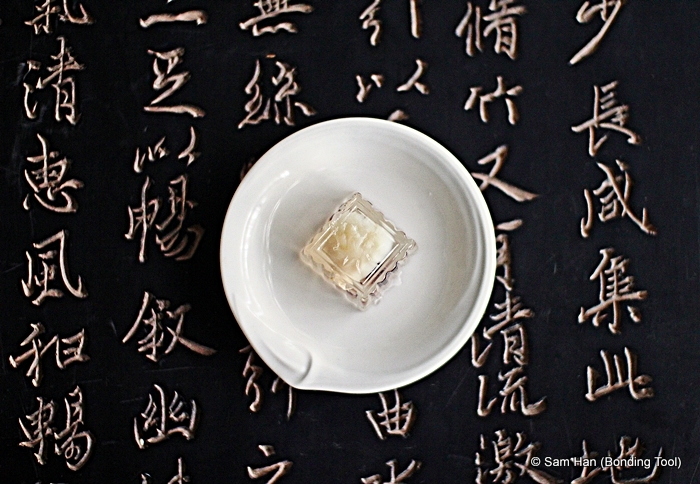 |
| Japanese konnyaku is made by mixing konjac flour with water and limewater. |
 |
| Konnyaku is valued more for its texture rather than taste, which by the way is very little, almost bland. |
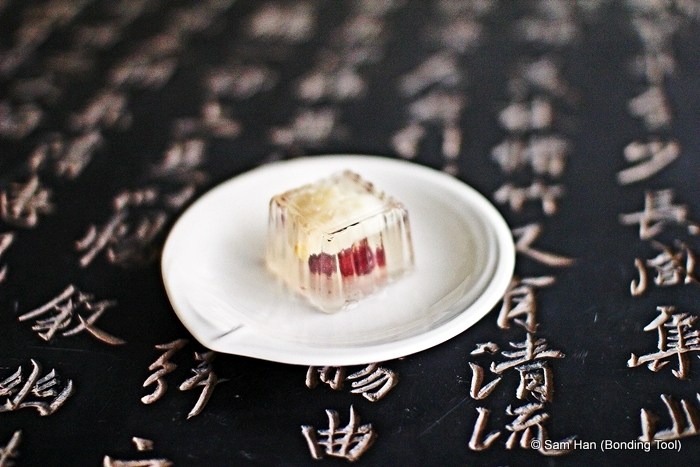 |
| Konjac has almost no calories, but is very high in fiber. Thus, it is often used as a diet food. |
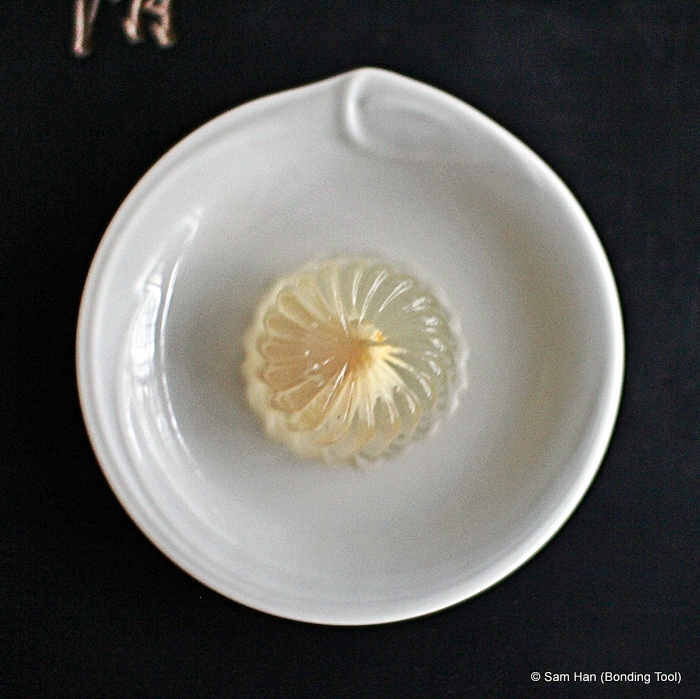 |
| Konjac fruit jelly needs chewing as it does not melt readily in the mouth, unlike gelatin products. |
 |
| Known as konjac candy, konjac tofu, konnyaku jelly – you can add food colouring and essences to these for visual appeal (when having a party or selling) but I prefer them without for own consumption. |
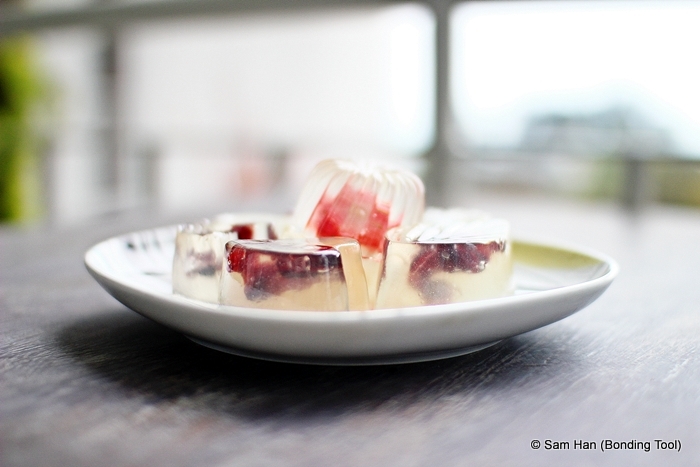 |
| Click here to see the nutritional and health benefits of Konnyaku – broom for the stomach. Click here to read on how Konnyaku assist in weight loss – how Konnyaku diet works |
WARNING: Konnyaku jelly products may pose CHOKING HAZARDS!!!
Take special care when you are eating. DO chew properly before swallowing.
DO NOT suck the jelly from the cups or mould as with enough force it may unintentionally lodge in your trachea and it is extremely difficult to remove if it gets stuck down the throat.
I do not recommend giving these to very young children or elderly persons for reasons stated above.
Recipe
Ingredients:
1x 250g Package Konnyaku Jelly Premix (plain or original).
1.25 litres Water (I used 1 litre water and 250ml syrup from the canned fruits).
Canned Fruits, optional. If using, reserve 250ml of the syrup and replace the same amount to the water level above.
Flavour Essences, optional. Use the flavour of fruits you have chosen to make in the recipe.
Food Colouring, optional.
For example, you may use canned peaches and therefore need peach essence and yellow food colouring. Follow instructions on the manufacturer’s if using. Also, see variation below.
Konnyaku jelly moulds are bigger and usually odd shapes than regular moulds. This is specifically made with the intention for better grip and size to prevent choking.
Method:
1. Put Konnyaku Jelly Premix and Water (syrup of Canned Fruits, optional), in a saucepan. Bring to a boil.
2. Stirring frequently, let it simmer till liquid is reduced enough to form jelly. (You can do a test by dropping a spoonful of the liquid into icy water. If they form well, they are ready).
3. Remove from heat and keep stirring until the bubbles dissipates.
4. Pour into konnyaku jelly moulds. Let cool.
5. Refrigerate the jelly and serve cold.
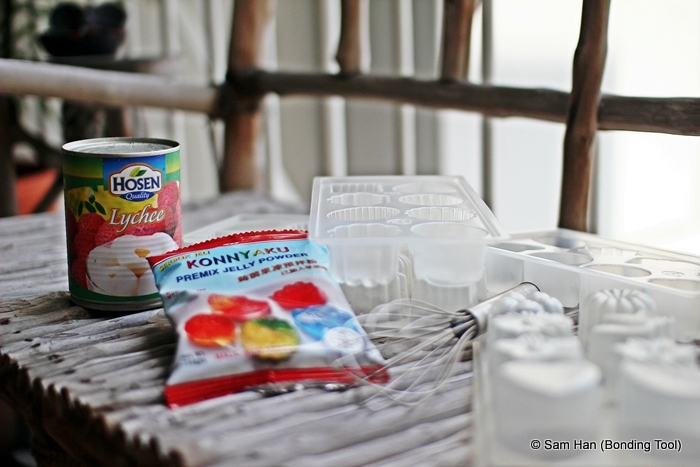 |
| Ingredients and some Utensils needed. |
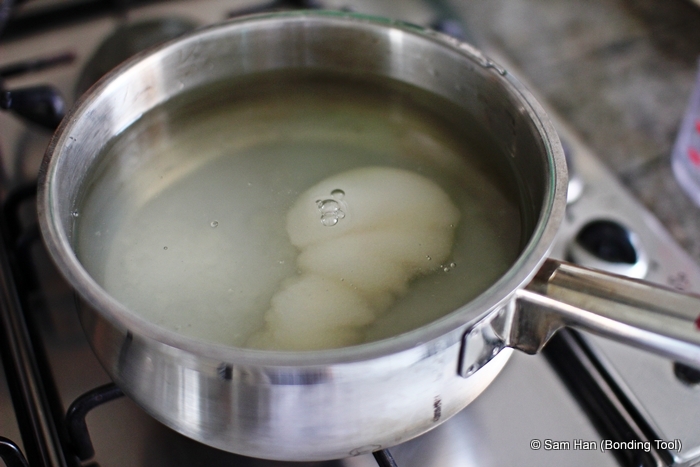 |
| Put Konnyaku Jelly Mix and Water (syrup of Canned Fruits, optional), in a saucepan. Bring to a boil. |
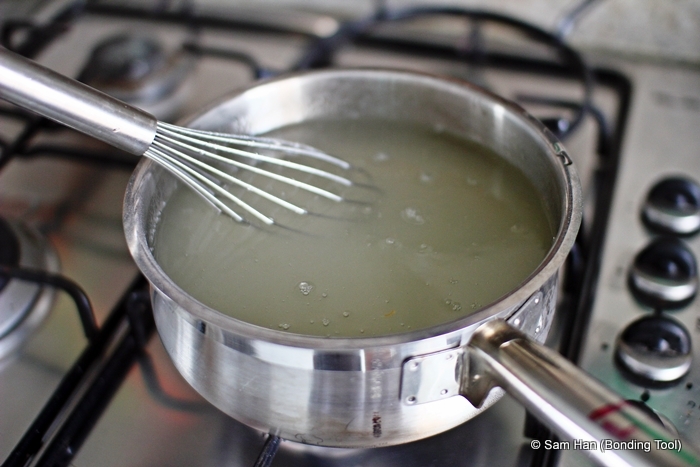 |
| Stir the mixture well to prevent clumping. |
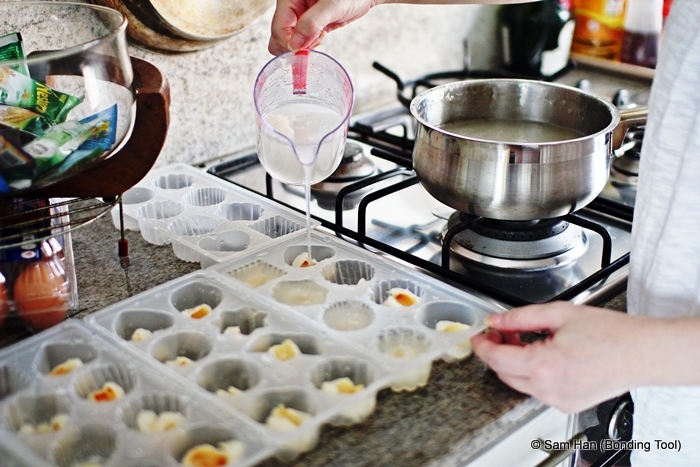 |
| Pour the cooked and slightly cooled konnyaku jelly into the moulds. Let them cool further and refrigerate them till needed. |
WARNING: Konnyaku jelly products may pose CHOKING HAZARDS!!!
Take special care when you are eating. DO chew properly before swallowing.
DO NOT suck the jelly from the cups or mould as with enough force it may unintentionally lodge in your trachea and it is extremely difficult to remove if it gets stuck down the throat.
I do not recommend giving these to very young children or elderly persons for reasons stated above.
 |
| The sale of Konnyaku Jelly may be banned in certain countries due to the choking incidents – I do not know which countries they are but this is still available in our supermarket. |
Variation:
Use light herbal or flower tea infusion instead of water.
Use fresh fruits that are soft like mango, kiwi, or even the Chinese herb goji berries or reconstituted dried longans.
I have seen sliced fruit cakes (those Christmas/wedding fruitcake) instead of fruits.
Make savoury ones instead:
How to make Sukiyaki with Shirataki Noodles (Konnyaku product) See how the whole family interacts with this dish.
How to cook Oden at Home with different shapes
How to make Oden by runnyrunny999
 |
| Konnyaku Oden Photo credit: Wikipedia |


hallo. I am still interesting of buying the moulds. Can you tell me who have you es buy ? web seite??? ( www... i am in Germany) thanks. .
ReplyDeleteHi Thi Hong Lan Thai. You can use any Chocolate or Jelly moulds. You may also use small ramekins or cup cake moulds if Jelly moulds are not available. Depending if you use any fruits (which would take up space) a packet yields roughly 20-24 small jellies for my mould size. You may want to visit www.thebondingtool.com for future visits. Thank you for stopping by. - Sam
Delete